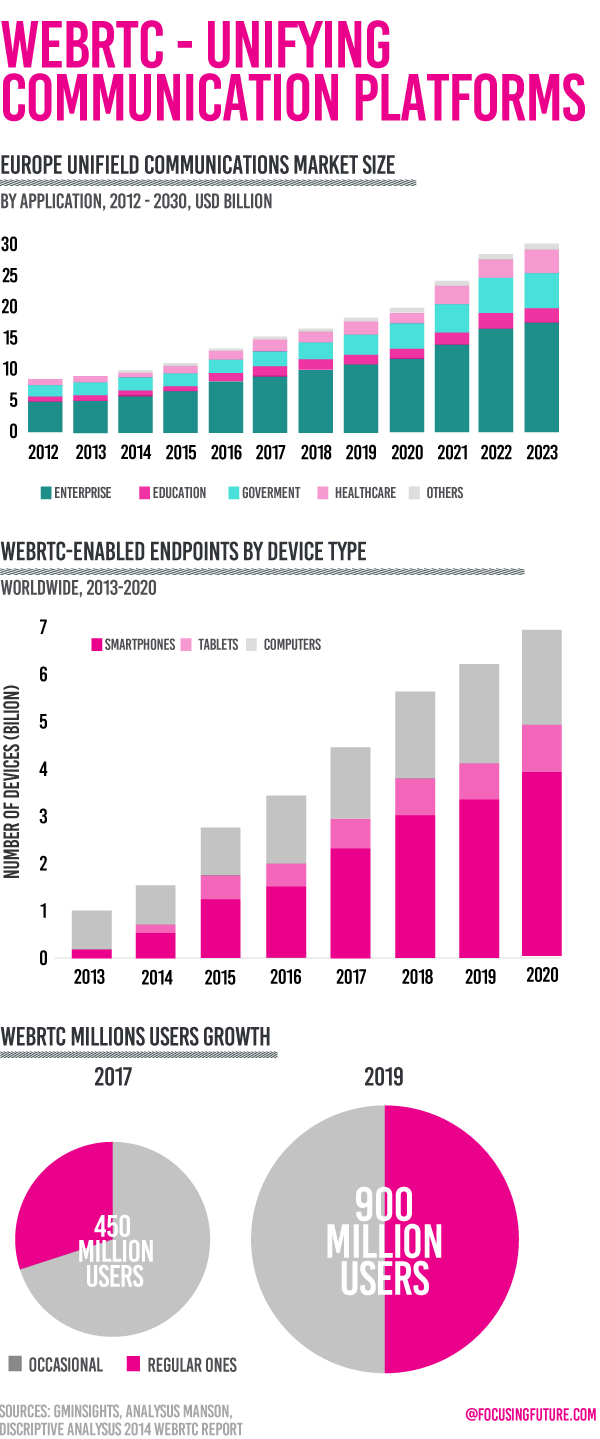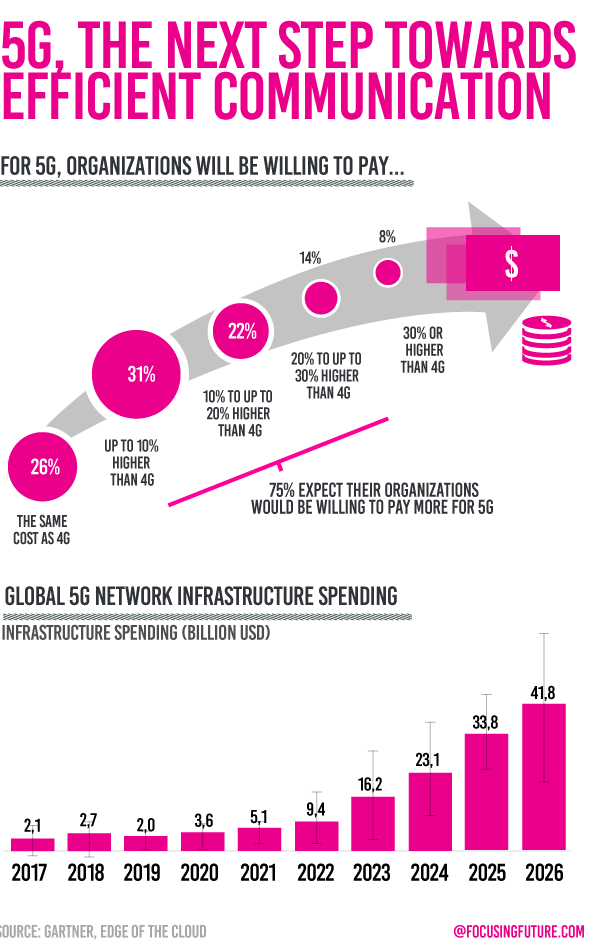![]() 6 minute read
6 minute read
Shorter, more informal
means of communication
Recent trends suggest that conversations are becoming shorter and more informal. Today, the top 4 chat apps have over 3 billion active users globally and have influenced how people communicate. According to a study conducted by Adobe, 70% of their respondents believe that text conversations are modeling chats and will increasingly become more informal. This is translating into the consumer-business paradigm. According to Ovum’s survey of millennials in US and Germany, over 50% prefer communication with companies via chats rather than emails or telephonic conversations. The same trend towards chat-modelled conversations has penetrated the enterprise communication infrastructure as well. Microsoft Team and Facebook Work offer less formal and more engaging platforms to interact with a work environment. Alan Lepofsky, vice president at Constellation Research and an expert on workplace collaborations, captures this trend in these words: “People don’t want to type formal e-mails anymore. These new apps allow you to convey a thought or update a status quickly, with a few words and/or emoji, so there’s speed to value’.
Unified communications:
just a dream?
Communication is essential for work and yet, with all the different applications used to indulge in different types of engagements, the process is far from efficient. Dr. Gloria Mark from the University of California calculated that it took more than 25 minutes, on average, to resume a task after being interrupted. Moreover, using various platforms makes contextualizing conversations difficult. According to Blair Pleasant, President of COMMfusion, the future of business communication has to be contextual, enhancing the process of interaction. ‘Unified communication’ platforms and WebRTC are such examples. It is a technology which enables peer-to-peer connections via a common set of protocols. This allows communication which includes a transfer of voice and video without the need for added plugins.
WebRTC has gained rapid popularity ever since it was revealed by Google in 2011. Today, according to a Markets and Markets report, its global industry is set to expand from $569.2 million in 2015 to $4.45 billion by 2020. Disruptive Analysis predicts that by 2019, there will be more than six billion WebRTC supporting devices and 2 billion individual users of the platform. Its potential can be best gauged by its application and the rapid increase of the users. For example, Snapchat has over 60 million users, Houseparty gained more than one million active users only a few months after its launch, Facebook Messenger accounts for more than 300 million monthly active users in just 2 years with 245 million making video calls alone. Moving beyond the consumer market, enterprise solutions based on WebRTC have also continued to exist and become popular as communication solutions. Citrix’s GotoMeeting and Cisco’s Spark have provided secure and efficient WebRTC communication platforms to numerous companies. Hence, the one-platform solution provided by WebRTC is an obvious preference and will, in turn, see an increased interest in its usage in the future.

B2B marketplaces
As with chat-based communications, business enterprises are also flirting with the social media models of consumer platforms. Axerosolution.com lists social intranet software platforms as one of the top adoptions trends amongst businesses. Platforms made as interactive marketplaces between businesses offer communication opportunities to expand businesses and connections. Founded by Joel Hyatt, the founder of low-cost law firm Hyatt Legal Services, Globality offers interactions between large corporations and small or medium-sized service providers. The company has become very popular and has raised an upwards of $72 million as funding since it’s launch 2 years ago. Yuval Atsmon, a Senior Partner and global leader of Growth and Innovation at McKinsey, has joined the company and will be the Global head of consulting. In a LinkedIn blogpost, he explained that the company was creating a marketplace which will ‘change the world of business for the better while enabling higher quality and more equitable economic growth’.
Another example of a B2B marketplace is Field Engineering that connects telecom engineers with businesses. Malik Zakaria, founder and CEO of the company, insists that new networking platform allows scalability by simplifying the process of recruitment and submission of interests and proposals. This way, business communication becomes less formal and more efficient, making interaction and engagement more communal.
Increasingly demanding broadband needs
All of the above innovations require a seamless data transfer, which is only possible if the hardware and the services are up to the mark. As more companies rely on cloud storage to build their platforms, internet providers are focusing on increasing their broadband capabilities by moving towards 5G. Samsung and Sony have already made their flagship phones ‘Gigabit LTE’. This development pushes telecoms and mobile hardware providers to follow the trend and adopt new connectivity possibilities. Numerous insight companies predict that Apple’s next generation of iPhones will support Gigabit LTE. While 5G receives attention from smartphone tech side, Qualcomm is supplying Gigabit LTE modems available on a wide size range.
China is already entering phase III of its 5G technology trials supported and led by the government. Moreover, the technology[nbsp]is now being used to provide transport solutions, systems design, and interactions. In view of this, China telecom predicts a full-scale deployment of the technology by 2020. According to CSS Insight, there would be over a billion users of 5G internet by 2023 with more than half of them based in China. Similarly, India’s top telecommunication company, Bharti Airtel, is working in collaboration with Nokia, SK Telecom, and Ericsson, to convert its existing infrastructure to support 5G connectivity.

Strong and efficient broadband infrastructure is seen as an essential prerequisite to ensure effective business communications. As economies become increasingly globalized and the transfer of information becomes essential in the wider IoT context, instant communication is in urgent demand. This, in turn, attracts companies to provide internet solutions by making technologies such as 5G even more efficient.
Innovations reform the way something is approached, which in turn, leads to new business opportunities. With time, the application of the Internet of Things is increasing. There exists a rapid demand for short, precise but contextual conversations. Consumers now need a decreased feedback loop and seek quick responses. Similarly, the means for interaction amidst businesses and enterprises too are becoming more efficient and engaging. In this context, business communication solutions are integrating non-conventional platforms introducing a new era of how information will be delivered in the future.




